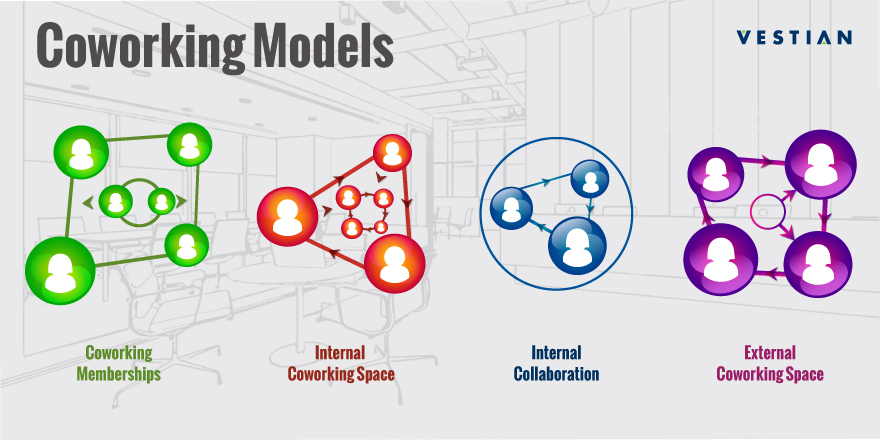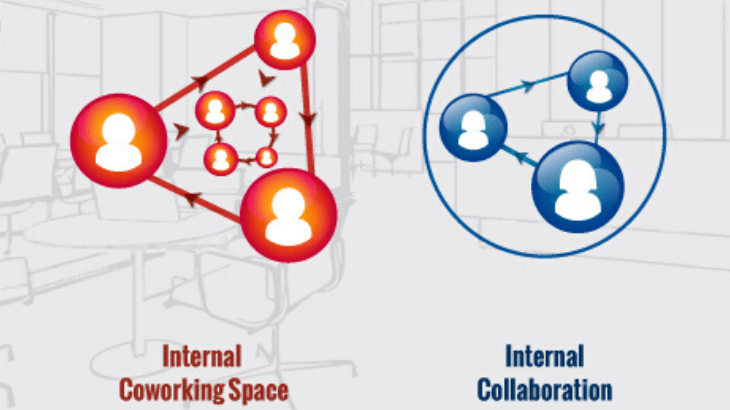Coworking is at the forefront of strategies, organizations world over are adapting, to provide employees an optimal environment to showcase their inherent capabilities. With an increasing number of businesses embracing this work culture globally, the lives of over one million employees are expected to witness a sea change by 2018. While it is not easy for an organization to adopt a specific coworking model – scalability, nature of the industry and organizational spends being some of the biggest deterrents, a large number of companies prefer conforming to it, their reasons ranging from nurturing resources for quality productivity to acquiring market information without any breach of security.
There are several benefits to working in co working set-ups, particularly for small businesses. Start-ups get flexible working options at affordable rents, as they are offered seats at cheaper rentals in an office-like environment while enjoying an organized and synergized set-up along with business networking opportunities with the other members. Not surprisingly, as per Deskmag’s Annual coworking survey, 71% of the respondents say that coworking is a creativity booster while 62% report an improvement in productivity.
Thus, with coworking becoming more mainstream, Corporate Real Estate (CRE) professionals across companies have gone a step further to broadly classify coworking spaces into four models based on their mode of operation:

Internal Collaboration
This model is applied only within an organization amongst its employees where they share knowledge and collaborate on pioneering ideas. While this increases productivity, provides flexibility and a protected environment, it could also prove to be a hindrance to new employees as they succumb to a prolonged ‘lag’ phase to adjust to the new cultural style. In this model, firms often organize weekly or fortnightly collaborative sessions within local/ global teams and/ between departments through high-end conferencing facilities. However, this model may not suit individuals who prefer to work independently like software engineers, industrial designers, coders or gaming developers.
Coworking memberships
In the quest to garner market information and business trends, many organizations enroll their employees at external coworking spaces. This model is typically suitable for business development professionals who need to proactively network, are self-sufficient and enjoy working independently. It caters to those who wish to connect with other coworkers from an external location, establish industrial contacts and have easy access to events and other business opportunities. It has proven to be advantageous in terms of increasing productivity, providing flexibility and reducing travel time. Organizations opting for this model find it convenient to allow working parents of specially-abled children or new parents to work out of such set-ups once their maternity/ paternity leaves have been exhausted.
Globally, a majority of the coworking space providers’ claim around 70% of their revenues comes from their memberships with corporate clientele alone. Companies such as WeWork, Thrive and Spaces are popular coworking space providers that largely utilize this model across their facilities worldwide. On the flip side, security concerns and proximity to competitors are the looming concerns that most corporate end-users face when considering this model.
Internal coworking
In this model, the internal coworking space is managed by individuals or companies where space is given to start-ups or small businesses with the aim of creating a hub of similar interests, where they receive mentoring services as well. Most start-ups have financial limitations and seek networking opportunities and connectivity to sustain, thus opting for coworking hub spaces. It is beneficial in terms of flexibility, knowledge sharing, and accessing talent worldwide. Swire Properties (Hong Kong) is one such coworking space provider which helps start-up organizations with a base to operate.
In internal coworking, start-ups are often mentored by their parent organizations, venture capitalists and/ or investors. This allows the parent company to exercise control and constantly access the start-up project with no risk or impact on its primary venture. For instance, very few are aware that Alphabet Inc, Google’s parent company, funded the project of futuristic self-driven cars till the venture became official as Waymo in 2016. The drawbacks of this model could be a violation of confidentiality, and operational complexity owing to differences in corporate and entrepreneurial backgrounds.
External coworking
This model, when compared to coworking memberships and internal coworking model, may have relatively less takers, but does fetch coworking space operators high rental yields. Many organizations and agencies resort to external facilities to conduct joint studies or collaborative ventures, owing to the extreme confidentiality of patented information or high-security concerns. This forms the premise for external coworking and aids in creating a viable environment with secure rooms and minimal disruptions thus facilitating specialized business functions such as coding complicated artificial intelligence algorithms, or mapping process anomalies. etc
This model reduces operational expenses as one pays the service provider only for the precise requirements and there is a minimal risk of accessing copyrighted and classified company information. It helps in providing a secure yet invigorating environment as functional experts brainstorm on issues, coming up with path-breaking services and products while sharing experiences. However, cultural dichotomy and clash of egos may frequently be witnessed during the process. Other drawbacks include staff poaching and at times the benefits might not be reaped equivalently by both partners.
Today, with increasing level of competition in the office space spectrum, most coworking space providers are proactively seeking service differentiators to expand their businesses. Whether it is a private office space in one city or a shared desk in another, coworking space owners are customizing solutions based on one or a mix of the above models. In a bid to increase revenue share, coworking spaces frequently rent out space to industrial forums and event organizers to conduct corporate events, conferences and hold round-table meetings. Yet, the fact cannot be overlooked that coworking today has become a facilitating medium that has essentially helped corporates to battle high attrition rates, utilize space efficiently, encourage collaboration, provide a positive atmosphere for creative thinking where conversations and ideas can flow freely, encouraging an environment of gainful ideas and re-establishing to connect with employees. Thus, by dint of coworking space, a company becomes more than just a job; and a workplace more than just regular office– it becomes a place to co exist and thrive.

